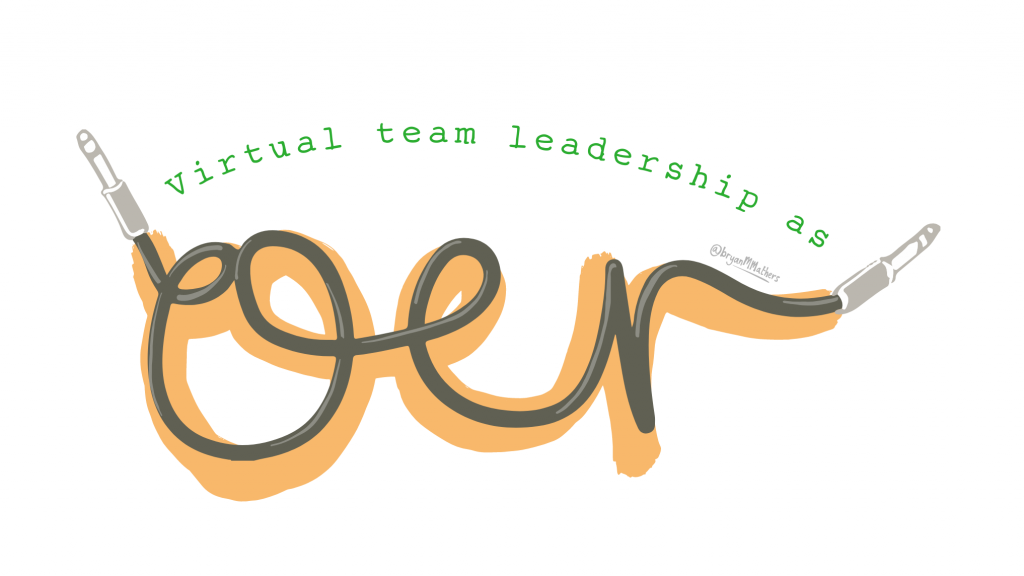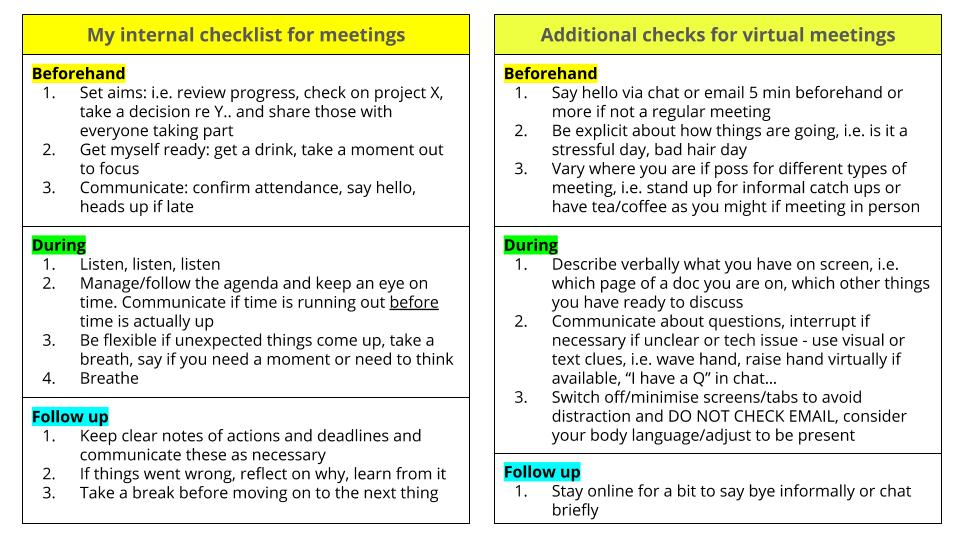For the past two years I’ve been blogging about our approach to leading a virtual, fully distributed team for ALT, the Association for Learning Technology. Together with my colleague Martin Hawksey I have charted our journey in podcasts and blog posts.
Your own ‘journey’ may be only a few hours, a day or a week, probably not by choice and at a time of global emergency. So here are the tips & tricks I wish I had been given BEFORE I became the Chief Executive of a virtual organisation:

Basics for you
Putting together work spaces at home in a hurry is always going to be a compromise, but checking on some basic things like the height of the chair, angle of your arms when typing, glare on the screen(s) etc is important. You will feel it after hours and days of sitting at your new station and being uncomfortable or in pain will become an issue. Try to find a compromise that works or at least be aware of potential issues and get up frequently to help your body adjust. Everything going online doesn’t mean your physical self doesn’t have needs and it makes a big difference to you if you can feel settled at your new ‘desk’ to some degree at least. Consider small tokens of familiarity, pictures, or even post it notes to help you ‘move in’.
Share tips or niggles with your team and ask colleagues to do the same. It is really helpful to acknowledge that you, too, find it surprisingly uncomfortable to work on the sofa, that kids dropping in unannounced drives you mad and that you had NO IDEA that the dog would only accept sitting on your lap all day. Team building starts with sharing the reality of the transition as a person, not just a job role.
Routine is your friend
Working virtually is easiest when you have a routine. At this point, that may not be entirely possible, but you might be able to do something like: set up a daily 30 min check in for groups or everyone; set up a schedule of regular one to ones (for example on a specific day each week), set regular team meetings; or designate a time slot as your “office hours”.
Routine, and establishing a new rhythm is key to leading a virtual team. It provides a structure around which a team can function and sets deadlines for individuals who may be feeling bereft of their usual routines. Not everyone can easily hold it together when in addition to a crisis they are suddenly working from home, at an uncomfortable kitchen table, surrounded by laundry and dishes and 101 other things that demand their attention.
Replicating structure for both focused work meetings and tea and coffee breaks/water cooler moments is going to help everyone. Start the week with half an hour of team chat about the weekend, or end the week with a wind down catch up. Create space for being social as well as productive.

LISTEN (and then listen again)
Working virtually is going to rob you of many ways in which you would normally manage people. Body language, tone of voice, observing how people interact or sit at their desk… you are going to get A LOT less information about the people you lead. So when you do meet, close windows and browsers, sit back, make eye contact and listen (and then listen again). Don’t let yourself be distracted by other things, or even how someone might react because they are self conscious on video or a voice call.
You can get a lot from virtual interaction if you focus and are prepared to deal with what’s coming your way, which is likely to be not all good! It can make you feel helpless when someone is in tears on video chat. It can be really tough to have a disagreement over the phone, particularly when you are used to dealing with situations like that face to face. But with months of uncertainty ahead, you won’t be able to park a problem and then solve it when you are back in the office. So encourage your staff to talk to you and tell them that they have your undivided attention. That’s the magic sauce.
Keyboard shortcuts are a killer
There will be many moments when you are working together with someone, and there is miscommunication. You are on one page, they are on another. For you it’s working, for them it isn’t. Even if you all have a similar level of digital competency, you are likely to use different methods to achieve the same aim, and things like innocent little keyboard shortcuts can be a killer.
Because YOU CAN’T SEE what someone else is doing on their keyboard, even when you share screens, you will likely miss a lot of stuff. It’s surprising how much. So try to get used to describing what you do as you are doing it (literally say… I am clicking on this..) and document as much as you can, ideally together.
Sometimes you just need to take a deep breath and start again.
The darkest day: and how to get up again tomorrow
Leading a virtual team is just as hard and tiring and trying, just as fun and enjoyable as leading people in person – so at times like this it’s a complete nightmare. You have to have all the answers, but it’s a lot harder to project confidence when WIFI is down and you are sitting at a make shift desk trying desperately to complete a risk register. At that point, someone has a personal crisis, stops communicating and because you are all at home you have no idea what is happening. Are they OK? Will they come back to work? What should you tell everyone who is waiting? What’s happening to the person who has been silent all day? Why did you not get the report you were waiting for? And why, why, are there already 200 new emails.
You are facing impossible odds, and leading a team is always more work when there is a crisis, and in particular when there is a prolonged period of uncertainty. You will have dark days and people rely on you to get up and do it all again the next morning. Here is what I do to help with that:
- keep to work hours wherever possible and protect non-work time
- sit for a while at the end of the day to ‘commute’ and reflect on my day
- draw a circle and divide it up into a pie chat of everything you are worried about
- label each worry
- give yourself a break
- leave your laptop shut for the rest of the night and wherever possible don’t put work emails on your phone
Good luck. You can do this.

